-
Bee Creek Massacre
The Pro-slavery, anti-union beliefs of Silas Gordon resulted in the Union burning down everything in Platte County, Missouri, twice. It seems he was consumed by an undying rage directed at the North; he killed people with no evidence of wrongdoing, just because he was suspicious of them. In all likelihood he was also responsible for the Platte Bridge Tragedy, in which a rail trestle was burned through, causing the entire bridge to collapse when a passenger train crossed over it. The tragedy killed 17 men, women, and children.
Colonel James Morgan burned down Platte City and apprehended three of Gordon’s men, Black Triplett, Gabriel Chase, and William Kuykendall, in retaliation for Gordon’s guerilla tactics. They begged for a real trial, but Morgan had other ideas, taking them back to Bee Creek Bridge where Triplett was shot by eight men, Chase then ran with his hands tied behind his back before sinking into the muddy bank where he was then bayonetted through the throat so hard it almost decapitated him. Kuykendall played dumb the entire time and was spared.
-
Champ Ferguson at Saltville
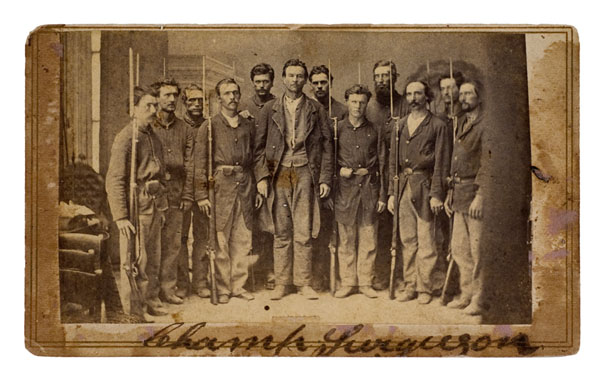
Champ Ferguson was a Confederate supporter who was taken by the same type of rage that Silas Gordon possessed; he led multiple gangs of Confederate sympathizers and Confederate soldiers. He was notorious for his cruelty and hate of anyone that got in his way or showed even the slightest support for the Union.
He would cut the heads off of elderly men and roll them down hills into towns. Three months after he returned to his home in Nashville because he had heard the news of Abraham Lincoln’s assassination, he was arrested.
They hung him on October 20, 1865, after he was tried and found guilty of 53 murders. Ferguson had shot and stabbed unarmed civilians because they supported the abolitionist cause. His actions after the first battle of Saltville, Virginia were his most heinous; he and his gang murdered over two dozen men of the 5th U.S. Colored Cavalry Regiment, including white officers in a field hospital.
-
Savannah Campaign
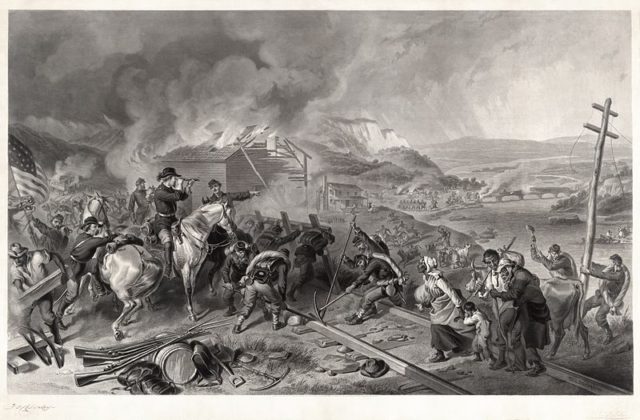
More commonly known as Sherman’s March to the Sea, the campaign is dated from November 15, 1864, after the razing of Atlanta, Georgia by General John Bell Hood, to December 21, 1864. Hood did not intend to set Atlanta ablaze, just military supplies so they would not fall into the hands of General William Sherman.
With his army of 62,000 soldiers and 64 cannons, Sherman marched 300 miles to Savannah, Georgia, where they leveled everything. They made sure they destroyed the railroads, ripping up ties, heating and bending the rails around trees, destroyed factories with dynamite and burned down towns on their way there. Sherman had given the men orders to not hurt the civilian population unless they resisted, his intent was to break the back of the South, both body and mind.
It is still fiercely debated today whether the march itself was a war crime. Sherman knew that civilians, not just military personnel, would suffer greatly and that the outcry would end the war that much sooner. Sherman said he had no intentions of killing civilians (if he knew that civilians would be harmed then how did he have no intentions?) and that is why the march is left open to debate now.
Even so, Sherman knew there would be civilian casualties and tried to explain it with the simple statement of: “War is hell.” There were reports of 200 civilians being killed just north of Columbia, South Carolina, so Sherman knew exactly what his men would do without a superior’s gaze upon them. After Atlanta had been evacuated Sherman ordered the rest of the city to be bombarded with artillery. A shell fell through the roof of a home, cutting the daughter of a man named Warner in half and blowing off his legs.
Sherman watched his men rape and murder slaves that did not join with him and did nothing to stop it. The slaves that did join were given jobs as unarmed porters; they were treated better but could only rely on food and water if there was any surplus and after the army was satisfied.
Sherman also ordered the execution of a 50-year-old man for suspected espionage, even though he was most likely innocent. Around 50,000 civilians were killed during the Civil War and almost 1,000 of them were killed during the march. Most of these were killed when soldiers entered their house without permission – the 3rd and 4th Amendments of the Constitution prohibit this.
-
Shelton Laurel Massacre
Lieutenant Colonel James Keith was sent to the town of Marshall, North Carolina that was on the border of Tennessee, with the 64th North Carolina Regiment in January of 1863. A storehouse was broken into by a gang of pro-Union civilians, who stole Salt and anything they could carry. They then blew it sky high with gunpowder. The gang also decided to break into the home Colonel Lawrence Allen, looting and destroying most of it.
Keith was furious and with the 64th looked all over Shelton Laurel Valley before finally finding them, a gunfight then started; he killed twelve of them and captured seven. He then found their homes and proceeded to torture any women who were present until they gave up the location of eight more Union supporters. Keith took the men and marched them for Tennessee before two of them escaped down a ravine.
Even after the orders to hold the men by the South Carolina Governor Zebulon Vance, Keith decided to execute the men and throw them in a ditch. Keith received two years of prison for this. He later escaped and was never seen again.
-
Sacking of Osceola, Missouri
No other territory saw as much anarchic bloodshed as the Kansas territory (just look up Bleeding Kansas as an example). On September 23, 1863, Senator James Lane led a raid on Osceola, Missouri in pursuit of General Sterling Price’s invading forces, east of Harrisonville and Clinton, Missouri, near the present border with Kansas. Price was very pro-slavery while Lane was a very vocal supporter of abolishing slavery. Price had over 1,000 men under his command when they went into battle against a much smaller Confederate detachment outside Osceola.
When the Confederate soldiers were beaten they fled into the nearby cornfields and woods, Lane then led his men in after them and burned 797 of 800 buildings.
Making sure not to kill the civilians, they removed them from their houses and searched each room; they took anything of value before lighting them on fire. He then ordered the execution of 9 men of military age; one was 16 years old and sobbing over his now dead horse, on suspicion of aiding the Confederacy.
-
Centralia Massacre
On September 27, 1864, at around 9:00 AM, William “Bloody Bill” Anderson and 80 guerilla fighters – including Jesse James – rode into Centralia, Missouri so that they could rip up the railroad. Anderson decided it would be a better idea to stop the train and steal from the 125 passengers, including 23 Union soldiers. Anderson ordered everyone off the train and then ordered the soldiers to strip. He asked if there were any officers in the group, only one man stepped forward and instead of killing him, Anderson ordered his men to kill the other 22 soldiers, the men were shot, scalped, skinned and dismembered.
Sergeant Thomas Goodman escaped around 12:00 P.M. Almost 3 hours later, a 155 man Calvary unit armed with one-shot, muzzle-loading muskets, arrived in the town and heard of Anderson’s actions and attacked him and his men from the rear. Anderson’s men had four revolvers a piece and defeated the Union soldiers within three minutes of engaging them. Anderson survived to be killed in a battle in October of that year.
-
Battle of Fort Pillow
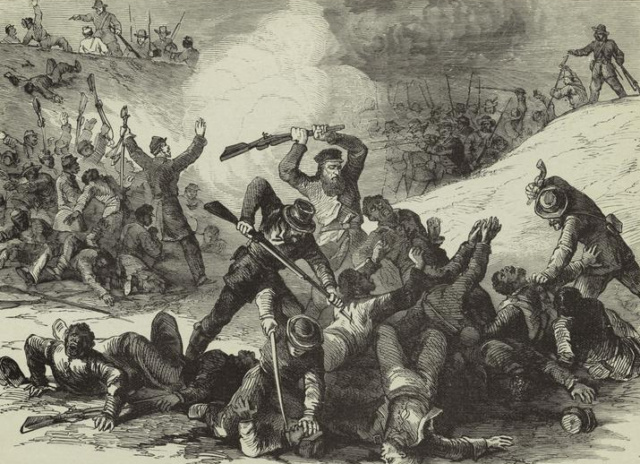
On April 12, 1864, a Union stronghold by the name of Fort Pillow was attacked by 2,500 Calvary soldiers under the command of General Nathan Bedford Forrest – Forrest would later become the first Grand Wizard of the Ku Klux Klan (KKK) – and they easily took the high ground around the fort. Forrest then demanded that the commanding officer surrender, when he refused the fort was met with a cloud of bullets, some men even being shot down while they tried to escape into the river.
After the last surviving garrison, comprised mostly of black soldiers and civilian workers, surrendered and they were disarmed, the Confederates swarmed on them like rabid dogs. They bayoneted, knifed, and beat around 250 men to death in an orgy of sadism. Over two dozen men were castrated and lynched, Forrest until his last breath always said it was a fair fight since the enemy was armed till the very end.
- Lawrence Massacre
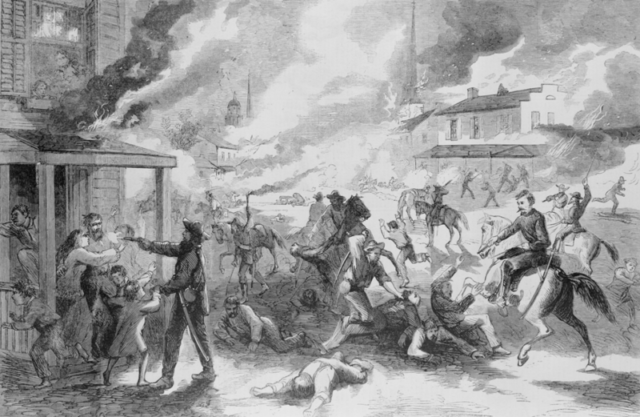
In retaliation for the sacking of Osceola, Missouri, Captain William Clarke Quantrill led a raid into Lawrence, Kansas. Most of Lawrence was anti-slavery, and Quantrill was a staunch supporter of slavery, joining the Confederate Army under General Sterling Price but later deserting to form his own unit. Quantrill’s raiders were known to have broke every law there was in the Kansas territory (there weren’t many to begin with).
Quantrill’s main goal was to kill Senator James Lane, but Lane escaped into a cornfield to fight another day. The raiders rode into town around 5:00 A.M. and set every municipal building and business ablaze. Homes weren’t torched, but the families were brought outside, the men were shot and killed while the women were raped; some women and children were shot down or trampled as they tried to flee. 185 men and boys as young as 11 were killed merely because they were able-bodied.
-
Camp Douglas
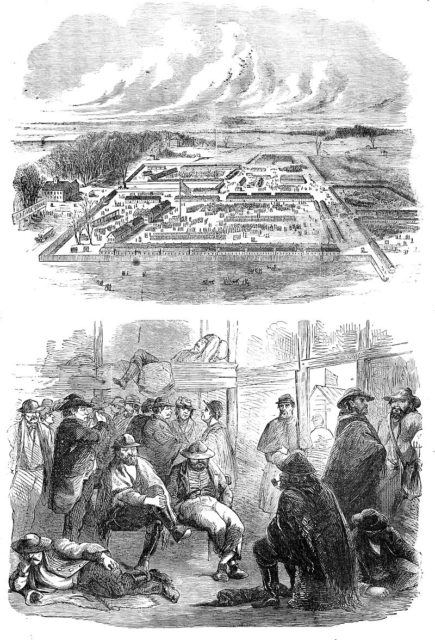
Camp Douglas was the Northern counterpart to Camp Sumter, a POW camp in Chicago, Illinois, created for Confederate soldiers. Camp Douglas was originally built as a training depot for new soldiers but by March 1862, it had been refitted to accommodate the captured rebels.
In its first month of use as a prison camp, 1 of 8 prisoners died from the harsh winter and pneumonia. The prisoners weren’t taken care of at all when it came to medicine and their diet. They were given enough food so not to starve but were given no fruit or onions which let their immune system deteriorate.
By the time the war ended the camp had gone through 12 different wardens. Not only were the prisoners very poorly treated, they were not even supervised. There were over 100 successful escapes, from June 1864 to the end of the war; inmates that were caught breaking any of the rules were tortured on the wooden horse, a wood pyramidal beam that rested between the butt cheeks against the tailbone. Prisoners were forced to sit on it with their ankles weighted for hours, even in snow, until they passed out and fell from the horse.
From 1864 onward, the inmates were fed even worse than they had been previously, but given only enough to keep them alive but they were still starving, purely for the guards’ amusement. They were forced to stand in freezing rain and sleet for hours, during which time the guards took anything of value they had on them.
The death toll by the end of the war has been put at 4,454, but many went undocumented, and the total figure may be as high as 6,000, most from exposure and disease brought on by their poor diet. This is at least 17% of the 26,000 prisoners sent to Douglas.
-
Camp Sumter
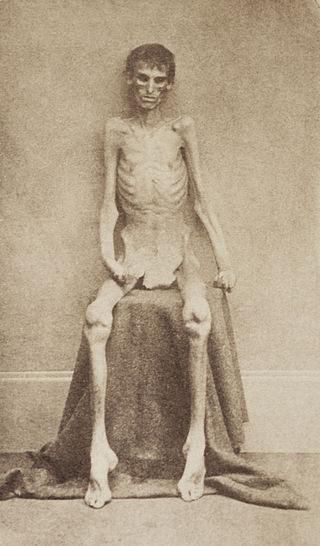
Camp Sumter was a southern Prisoner-of-War Camp for Union soldiers, today it is a historic site located in Andersonville, Georgia, from which the prison gets its more well-known name. Its conditions weren’t known from when it opened in February of 1864 until it was liberated in May of 1865, one month after President Lincoln was assassinated. When the mistreatment of the prisoners became public knowledge, the entire nation, and even Europe were disgusted by the photographs of horrifically disfigured prisoners who somehow found the strength to survive.
The prison consisted of 25 and a half acres east of Andersonville, and was nothing but a patch of land surrounded by woods and fenced in twice. The outer fence was 1,620 feet by 779 feet, with two entrances in the west wall leading into town. 19 feet in from the outer wall stood an inner fence made-up of chest-high posts topped with crossbeams. The inner fence was nicknamed the dead line. Anyone who tried to cross it for the wall, or even touched it, was shot.
Inside the camp, there were eight tiny buildings that could only fit a total of about 100 men. The prison had almost 45,000 prisoners by the end of the war. Most were given tents to sit or sleep in, but the summers in Georgia were so blistering that 13,000 of those men died within seven months of incarceration from sunstroke, starvation, or disease. The entire prison population suffered from hookworms, causing them to have bloody diarrhea filled with worms.
The prison was poorly supplied with medical provisions and food. When Dr. Joseph Jones arrived to investigate the camp, he vomited twice during the hour-long tour of the camp, and contracted a severe flu which he warded off with citrus. He then asked the commandant, Henry Wirz, why Wirz was not suffering from scurvy, which was running rampant throughout the camp. Wirz replied that he ate apples and oranges. “And the prisoners?” Jones asked. Wirz shrugged and said, “What about them?” Prisoners were able to pull out their own teeth with their hands because of vitamin C deficiency. 3,000 died per month, or 100 per day.
There was no clean water, but they were forced to drink from the same creek running through the camp’s center where they bathed, it also caught about half of all liquid and solid waste. Wirz was tried, court-martialed, and hanged for murder on November 10, 1865, the only Confederate officer to be executed in this way. His primary defense was that the prison’s food and water never arrived by train. When he was hanged, his neck did not snap, and he strangled until he died nine minutes later.
